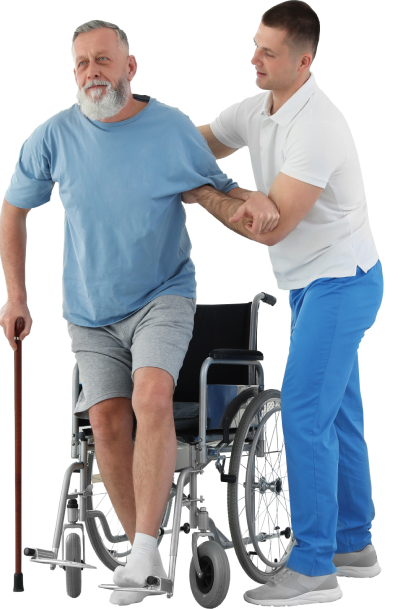‘Women’s Climb Night,’ Tuesdays at the Aggie Recreation Center, provides a judgment-free space to learn the sport.
This story is jointly published by nonprofits and The Salt Lake Tribune, in collaboration with, to elevate diverse perspectives in local media through student journalism.
Logan • It’s 7 p.m. on a Tuesday at the Aggie Recreation Center at Utah State University, and more than a dozen men are ending their sessions on the bouldering and climbing walls on the building’s north end.
Those who already know what’s about to happen gradually leave one by one, walking out with a bouncy gait on the plush ground that cushions climbers’ falls. Some of the men linger longer, waiting until the last possible moment.
As 7:30 gets closer, Jessica John prepares herself in the employee area as she glances at a bright pink note with a drawing of a woman climbing.
“Women kick ass,” it reads.
John bounces over to the climbing area. It’s time to start the routine.
“Hey,” she calls out to the men. “Tonight is our Women’s Climb Night. We’re attempting to carve out this space for women and nonbinary folk who don’t have as much space in the sport because it’s a very intimidating male-dominated sport. Tonight is our opportunity to create that community for them and get them a foot in.”
Sometimes, John later said, the men leave without any additional prompting. Other times, she said, “you have to dig at it.”
In spring 2021, Jill Woodhouse started Women’s Climb Night at Utah State. Out of the nearly 45 hours the wall is available to climb, 2½ hours on Tuesday nights became a sanctuary for female climbers. However, the initiative received backlash, and the climbing gym has been hit with multiple anonymously filed Title IX reports.
Title IX, the federal law passed in 1972, prohibits discrimination based on sex in education programs and activities receiving federal assistance. The law is primarily known for its impact on increasing women’s access to sports. But in recent years, some men, feeling as though things have been taken too far, have used the law to fight against spaces reserved for women.
John, who now leads the program, can’t and won’t say “no” to male climbers entering the rock wall on Women’s Climb Night. But that doesn’t mean she won’t take the time to provide some education.
“Even if they still decide to climb,” she said, “they’re going to have this conversation, and they’re going to think about it.”
She comes armed with a brochure that features the mission statement and the “why” behind Women’s Climb Night. There’s another piece of paper with statistics about women and the outdoors. The bottom of the inside left panel features the line “Everyone is welcome,” but that’s not always how female climbers feel during the other 42½ hours the gym is open each week.
(Matthew D. LaPlante | Utah State University) Mia Bateman of Mapleton, a sophomore studying human biology, climbs at the Utah State University Aggie Recreation Center on Tuesday, Nov. 14, 2023.
‘You did that wrong’
The smells of musty mats, cleaner and sweat circulate through the space. Woodhouse breathes deeply. White chalk falls from her fingers and drifts through slanted sunbeams as she slowly shifts her weight and reaches overhead. With a slight grimace, she presses upward. The rough, porous surface of the fake rock presses into her fingers. She reaches the last hold, waits, and then triumphantly falls 10 feet.
Stepping away from the bouldering wall, she’s grinning. Her hands move to her hips as she stares upward at the climb she just completed. She has spent weeks working on that challenge.
A man walks over, “You did that wrong.”
Woodhouse watches as he proceeds to climb the route. Woodhouse is 5 feet tall, and he towers over her, easily reaching the holds.
“It makes you not want to climb, not want to be in the gym, not be in that space,” she said. “It’s why Women’s Climb Night is so important. It’s why I started it. I see lots of encouragement; everyone starts cheering, high-fiving all-round, knowledge sharing, phone numbers being exchanged, and making friends. No judgment. It’s just what can be created through women-only spaces.”
Meredith Aamodt agreed.
Some men can be condescending, domineering and unwelcoming. Nonetheless, the Utah State climbing wall worker said, “We love our male climbers.”
She means that sincerely, she said. It was a male friend who introduced her to climbing in Oklahoma.
John also has fond memories, she said, of the male co-workers who rallied around her when she was 16, introverted, and just getting her start on the wall.
A coworker named Scott “was so encouraging and helpful,” she said. “He helped me find my groove.”
But there’s a caveat.
“I’ve had a dude come over who I wasn’t talking to and tell me, ‘You need to do it like this,’ like how they’re doing,” she said. “It’s incredibly discouraging, especially when it’s advice I didn’t ask for. And it’s not even helpful. It has nothing to do with your technique, so that can be disheartening.”
(Matthew D. LaPlante | Utah State University) Kayley Bullock of Park City, a junior studying kinesiology, climbs at the Utah State University Aggie Recreation Center on Tuesday, Nov. 14, 2023.
Climbing as meditation
Kate McDowell knows precisely where the next hold is.
Her foot is drawn to the purple rock like a magnet. She doesn’t look. Her moves are clean and smooth, a testament to her hours on the wall. A quick reach matches a sharp exhale. Her feet are crammed into small shoes with missing rubber, now fixed with a strip of white tape. Every movement, every breath, every shift or readjustment, is practiced time and time again.
It’s meditation.
“It’s almost like tunnel vision, I would say, but not exactly. While you are focusing on the route, you can’t really think about anything else,” McDowell said. “If you think about how high you are or say, ‘Oh, my gosh, this is crazy, I’m going to fall.’ It takes away the power and strength a lot of people don’t realize they have. That fear will prevent people from reaching, or they’ll jump off the wall.”
The power McDowell found through climbing, she said, has bled into other areas of her life. From trying out for the USU rock climbing team to job interviews, she said she has reached higher because of the empowerment she found through climbing.
It’s a gift from the wall she said she hopes other women can enjoy.
(Matthew D. LaPlante | Utah State University) Bethany Smith of Boise, a junior studying kinesiology, climbs at the Utah State University Aggie Recreation Center on Tuesday, Nov. 14, 2023.
Their own shoes
Women bustle around, placing their regular shoes in the cubbies beneath the bench outside the rock wall. More women are arriving, and the gym is almost full.
John said that, on nights like this, male climbers who are reluctant to leave the gym will ask a predictable set of questions: “When’s the men’s climb night?” or “If I identify as female, can I still climb?”
Looking earnestly at the women crowded in the space, John shifted her weight and said, “It’s a battle to show them that they’re worth it. Watching girls who come to our women’s nights with rental shoes, find their community, make friends, come back with those friends, and then, a couple of months later, come back with their own shoes. Just being able to watch that progression, even if it only happened for one person, is absolutely worth it to me.”
A loud cheer, mingled with laughter, comes from the direction of the wall. Someone just completed a route.
“I will fight for that as hard as I can, as long as I am here,” John said. “It’s just that I have been there, and I don’t want anyone to have to feel like I did because they don’t, and they shouldn’t, have to. If we can help create that welcoming community, it’s all worth it.”
On a Thursday night, two nights after the evening specifically dedicated to women, there are 12 men in the gym, and one woman. That’s how it is most nights.
John sits at the entrance, watching the climbers. As she does, someone new walks into the space, and John smiles.
Now it’s 12 men and two women.
Hannah Teasdale wrote this story as a student at Utah State University. It is published as part of an ongoing collaborative including nonprofits and The Salt Lake Tribune.
By Hannah Teasdale
Donate to the newsroom now. The Salt Lake Tribune, Inc. is a 501(c)(3) public charity and contributions are tax deductible

 435.215.7170
435.215.7170




 Service Areas
Service Areas























